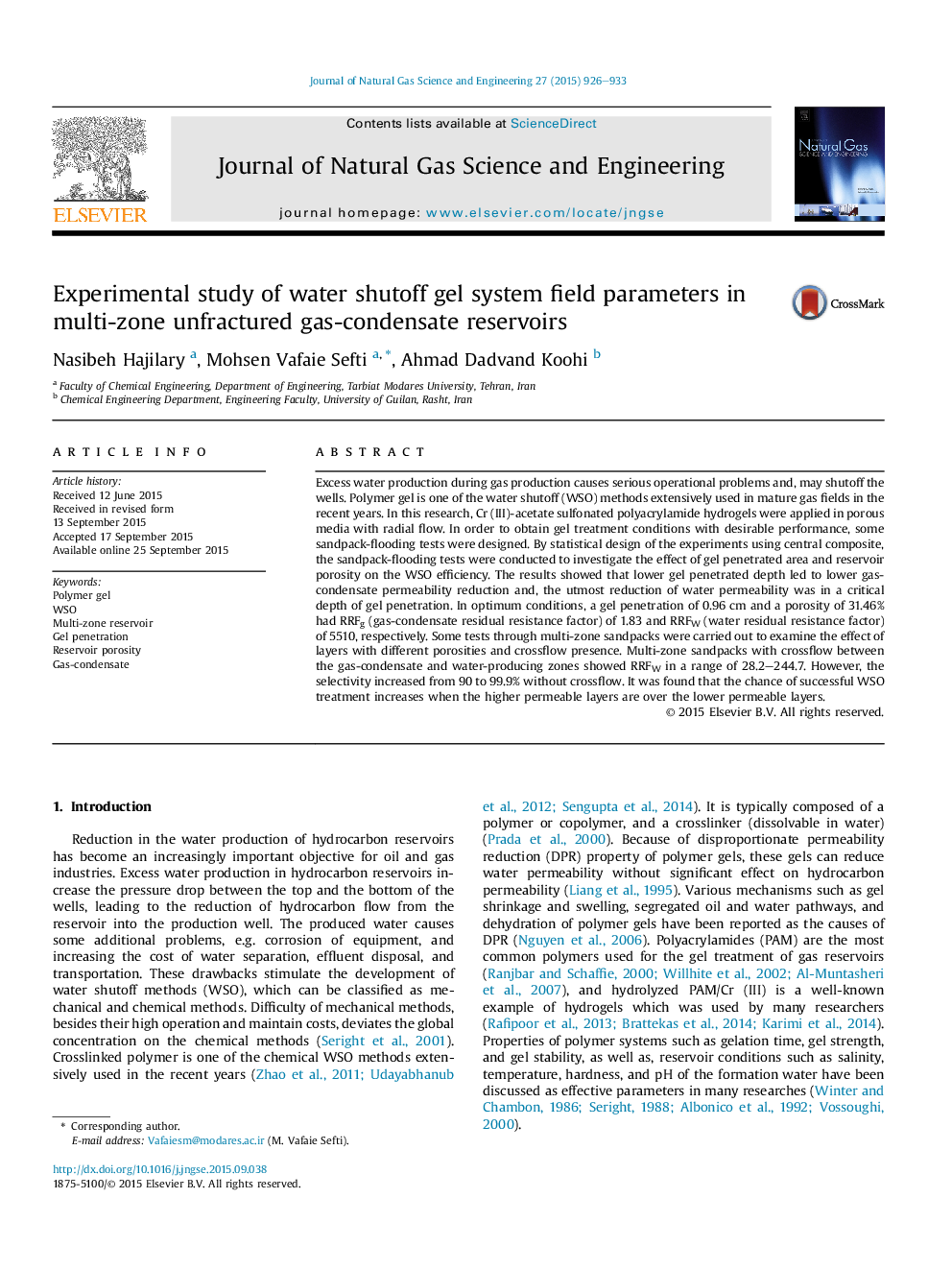| Article ID | Journal | Published Year | Pages | File Type |
|---|---|---|---|---|
| 1757640 | Journal of Natural Gas Science and Engineering | 2015 | 8 Pages |
•The effect of gel penetrated area and reservoir porosities on WSO efficiency was evaluated.•Polymer gel was successfully applied to WSO in multizone sandpacks.•The presence of crossflow between the producing zones decreased WSO efficiency from 99.9 to 90%.•When higher permeable layer is placed over lower permeable layer, the performance of gel treatment is improved.•The chance of successful WSO treatment is increased with optimization of field parameters.
Excess water production during gas production causes serious operational problems and, may shutoff the wells. Polymer gel is one of the water shutoff (WSO) methods extensively used in mature gas fields in the recent years. In this research, Cr (III)-acetate sulfonated polyacrylamide hydrogels were applied in porous media with radial flow. In order to obtain gel treatment conditions with desirable performance, some sandpack-flooding tests were designed. By statistical design of the experiments using central composite, the sandpack-flooding tests were conducted to investigate the effect of gel penetrated area and reservoir porosity on the WSO efficiency. The results showed that lower gel penetrated depth led to lower gas-condensate permeability reduction and, the utmost reduction of water permeability was in a critical depth of gel penetration. In optimum conditions, a gel penetration of 0.96 cm and a porosity of 31.46% had RRFg (gas-condensate residual resistance factor) of 1.83 and RRFW (water residual resistance factor) of 5510, respectively. Some tests through multi-zone sandpacks were carried out to examine the effect of layers with different porosities and crossflow presence. Multi-zone sandpacks with crossflow between the gas-condensate and water-producing zones showed RRFW in a range of 28.2–244.7. However, the selectivity increased from 90 to 99.9% without crossflow. It was found that the chance of successful WSO treatment increases when the higher permeable layers are over the lower permeable layers.
